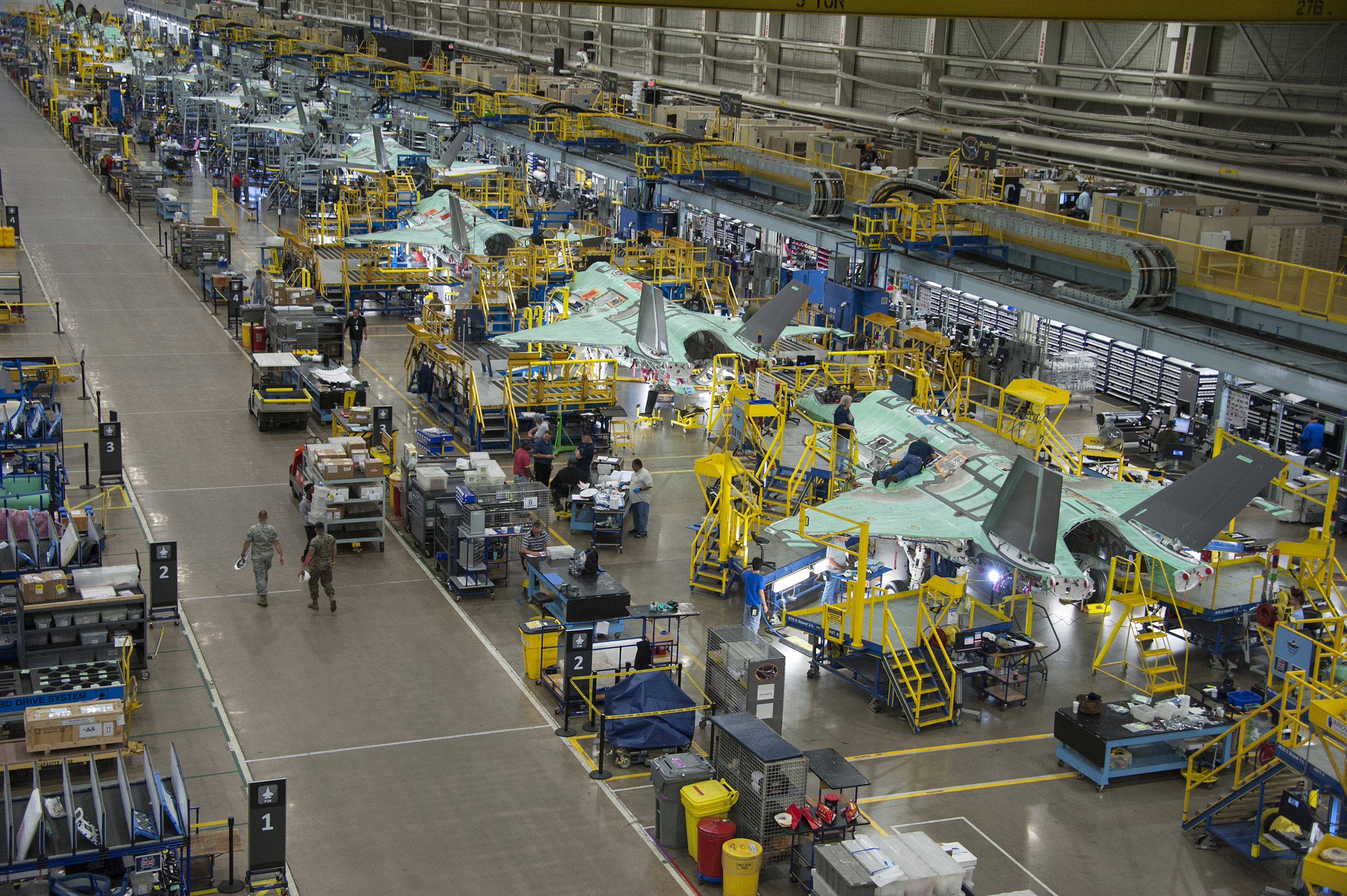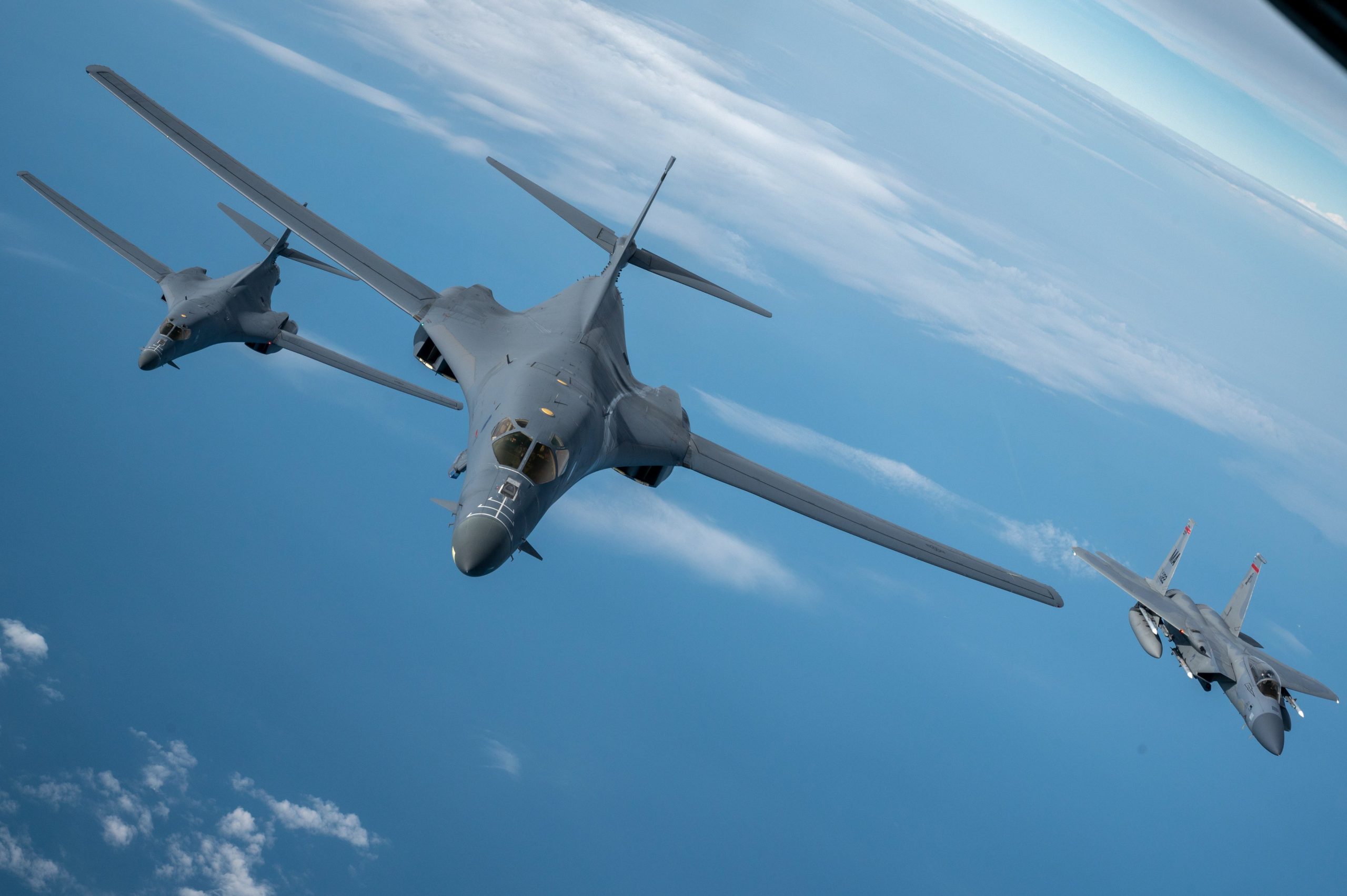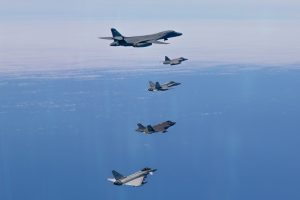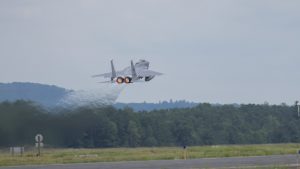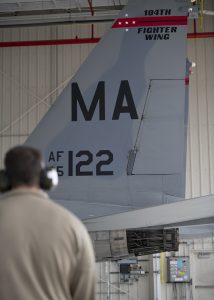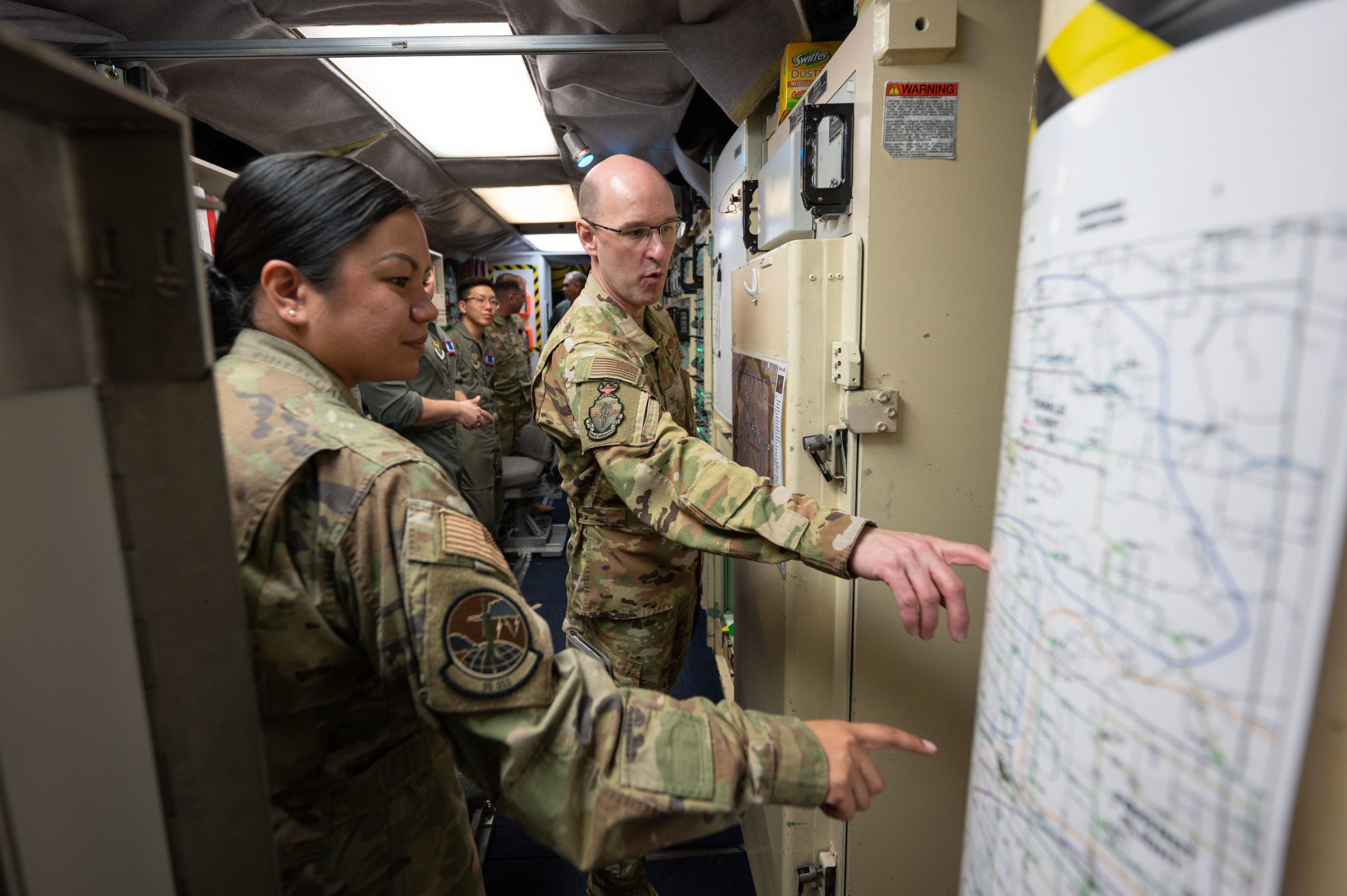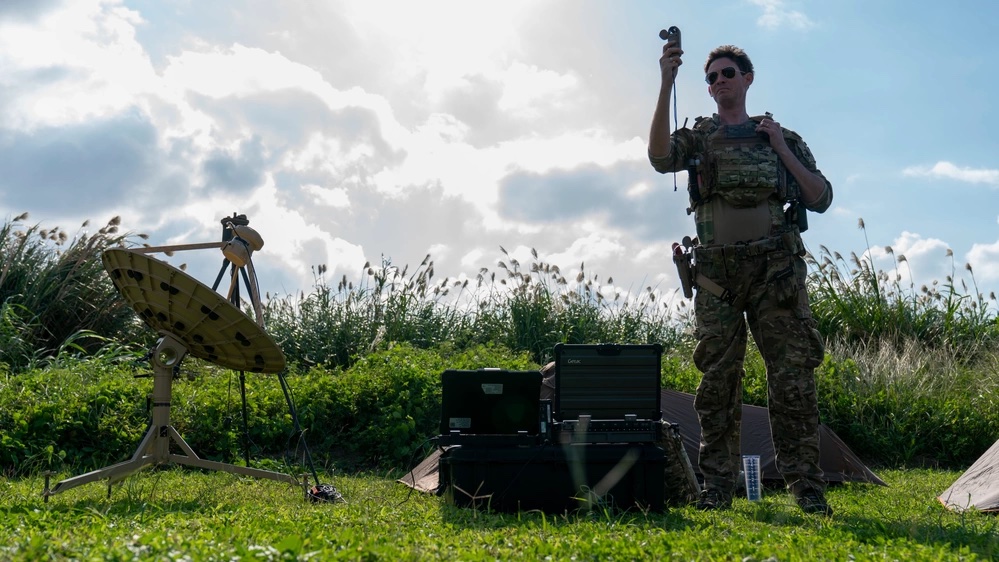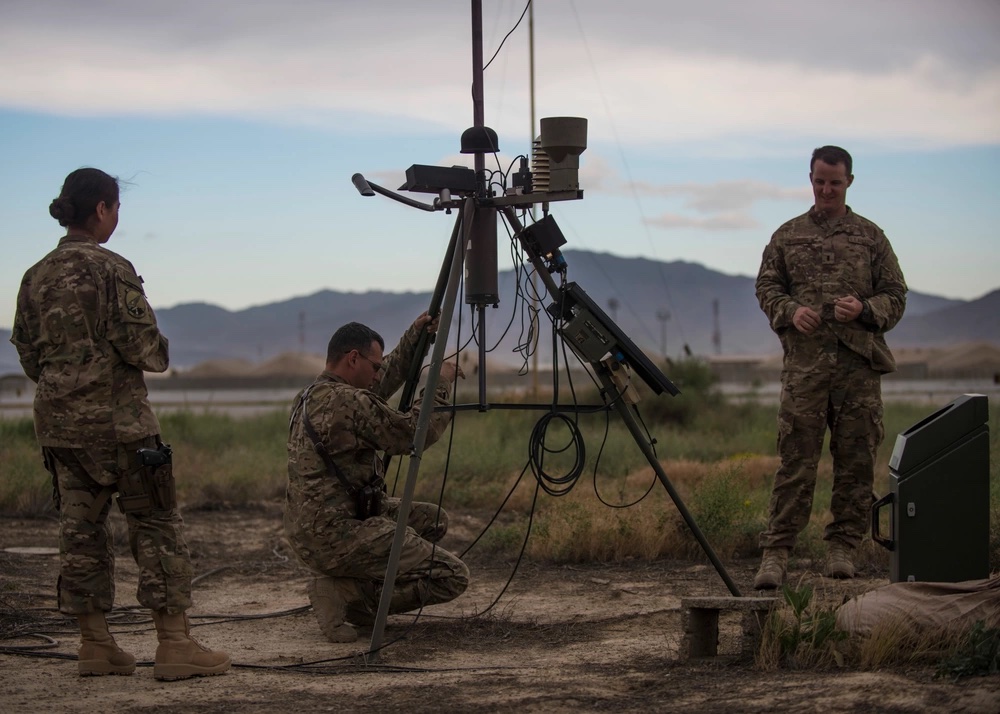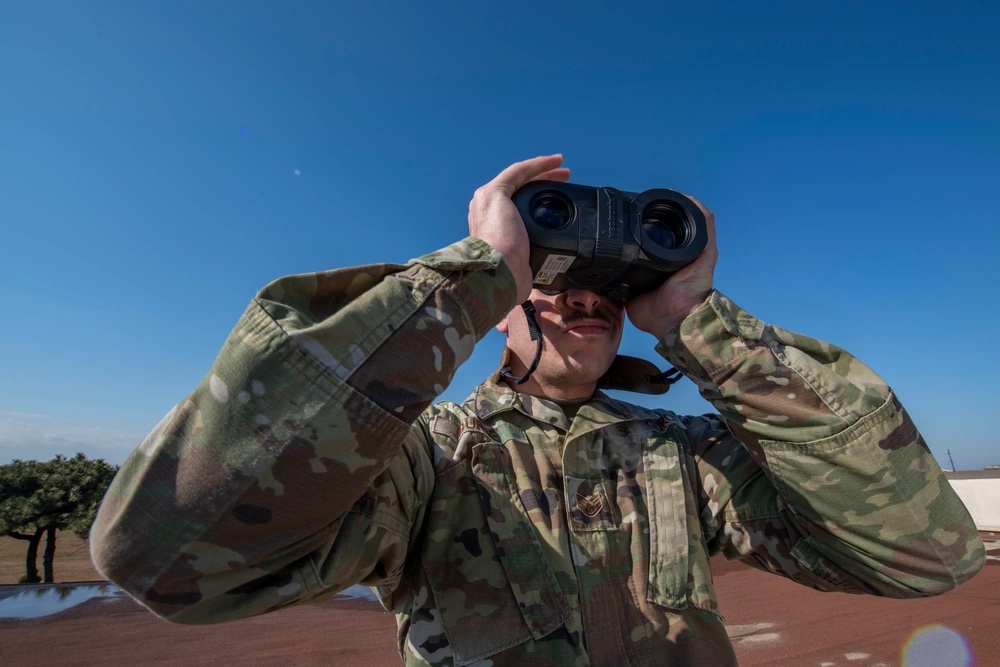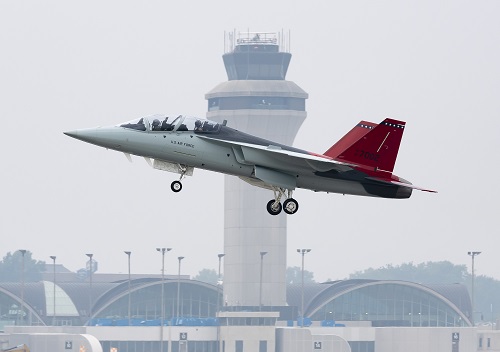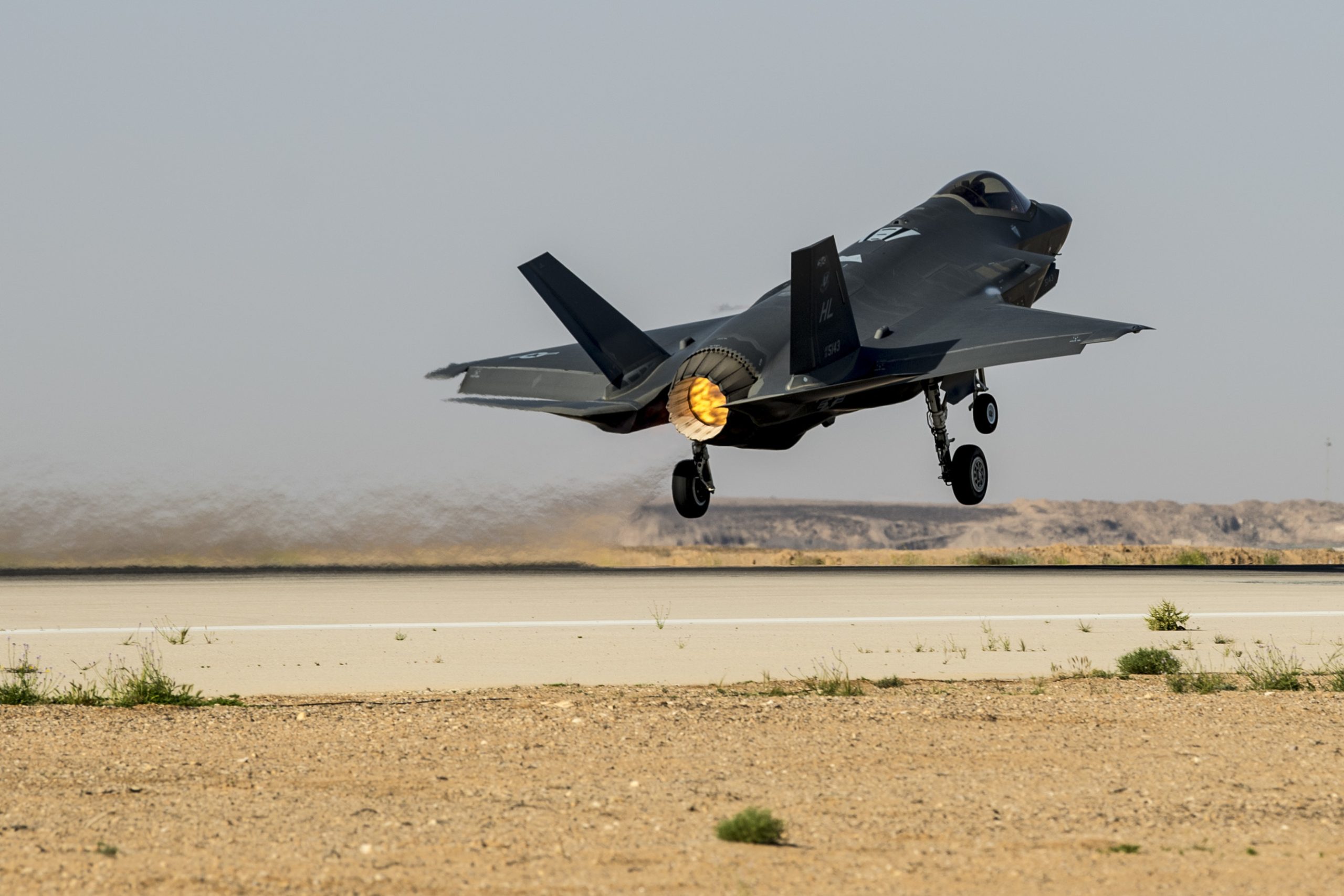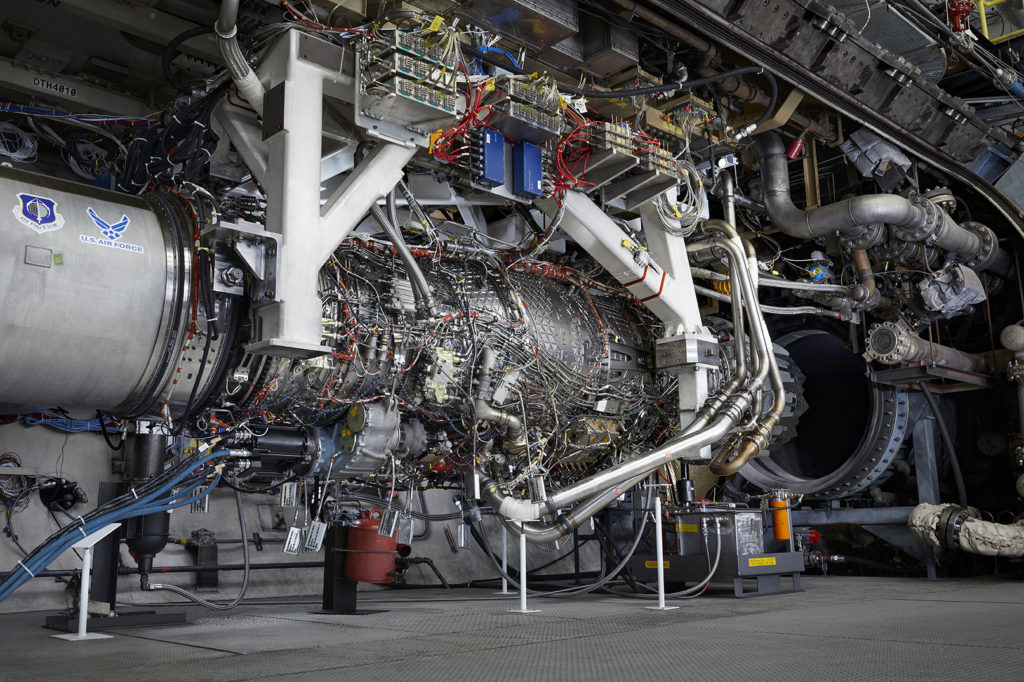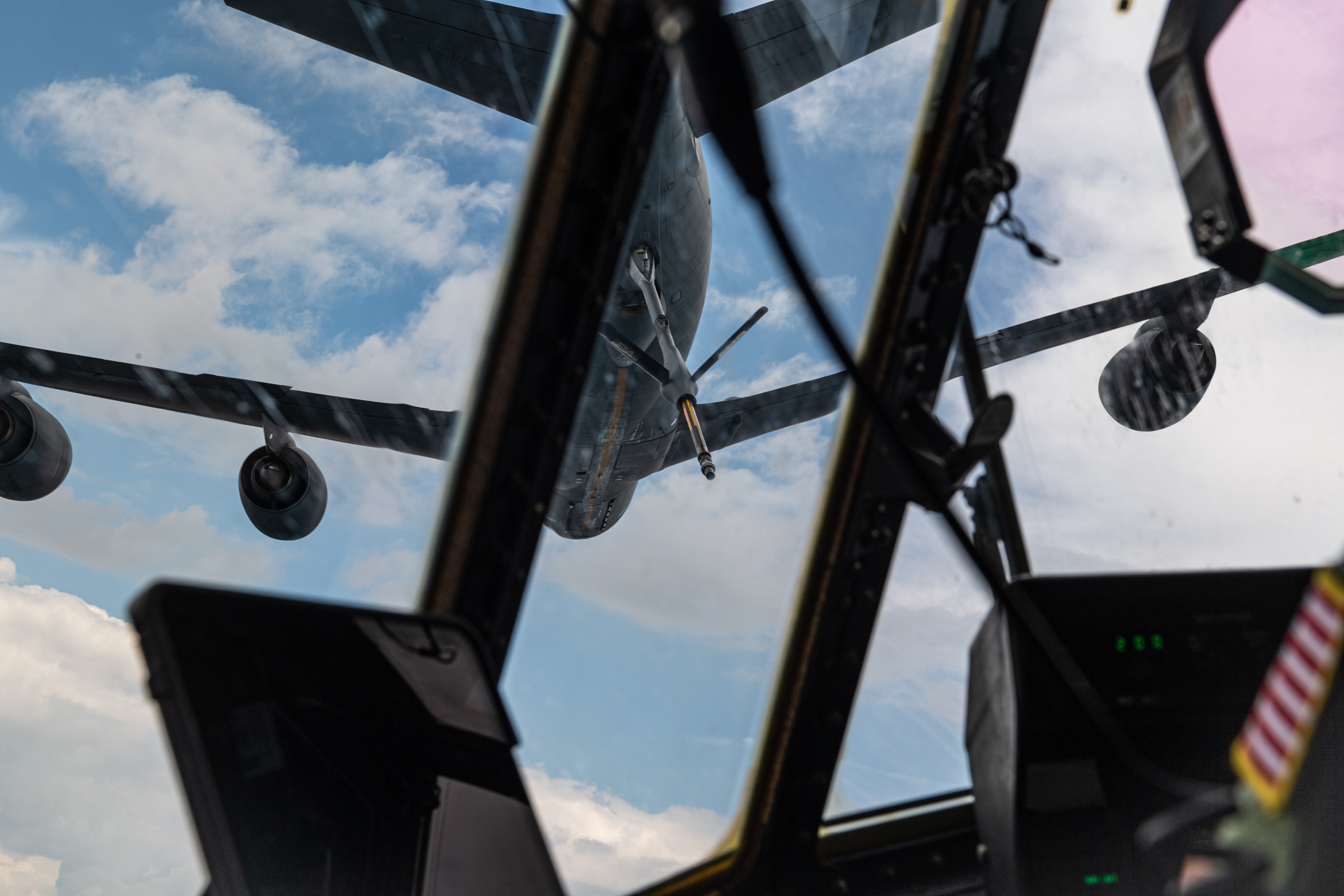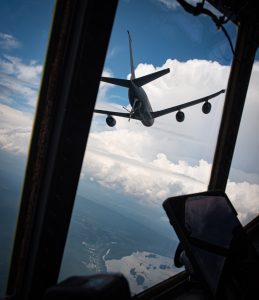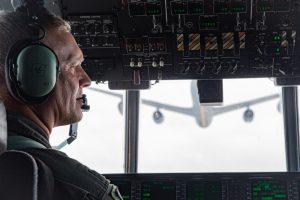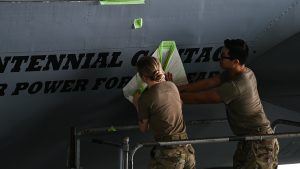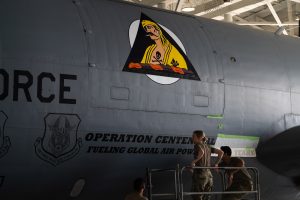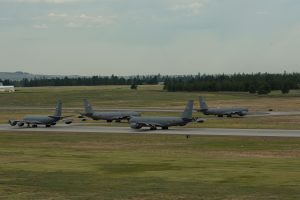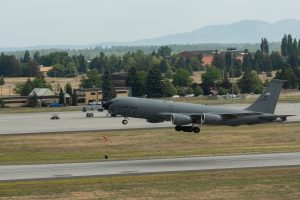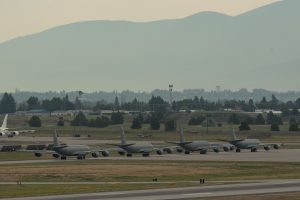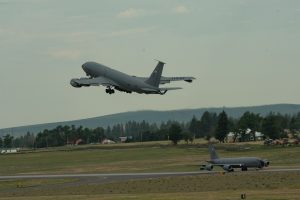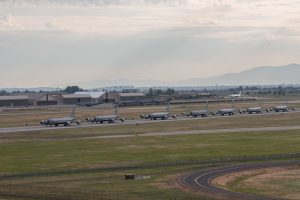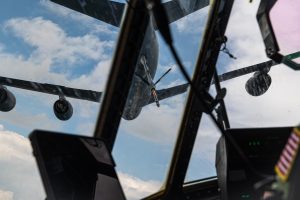Without a large corrective investment, the Air Force’s aged fighter force is breaking under the pressure of its small size, insufficient training time for high-end warfare, and chronic shortages of pilots and maintainers, according to a new report from the Air & Space Forces Association’s Mitchell Institute.
“We’re on a collision course” with real-world demands outstripping the fighter force’s ability to answer the call, said retired Lt. Gen. Joseph Guastella, one of the authors of the report. Fighter force readiness could “fall off a cliff,” added Guastella, whose last job in the Air Force was as deputy chief of staff for operations.
The Air Force’s resources and capabilities don’t match the National Defense Strategy, said retired Lt. Gen David Deptula, dean of the Mitchell Institute. In the face of an assertive China with rapidly increasing military capabilities, an aggressive Russia, and continuing demand for airpower from regional commanders, the need for comprehensive, capable airpower has never been greater, he said.
“It may take losing” a major war to get the public to understand the gravity of the deficit in airpower, he said, and by then, it will be too late.
A “modernization holiday” of the fighter force since the mid-1990s has left the service in a “capacity freefall,” said Doug Birkey, co-author and Mitchell’s executive director. He described USAF’s fighter force as “geriatric” and woefully undersized for what the nation expects of it.
The report authors urged the Air Force to buy more F-35s, especially since force structure decisions of the past hinged on the assumption that the fifth-generation F-35 fleet would be fully acquired by the early 2030s—but that never materialized.
The A-10Cs, F-15C/Ds, and F-16C/Ds which were designed in the 1970s “now average 41, 38 and 32 years old,” Birkey said, and all have long outlived their planned service lives. Age has a cost, Guastella added: the older aircraft get, the more more maintenance and parts they require, which in turn means fewer flying hours for crews.
For the first time, Deptula said, China’s pilots are getting more flying hours than U.S. Air Force pilots, and that additional training “makes a difference.” The Navy and Marine Corps have their own fighters, but their first objectives are fleet defense and close air support. The Air Force is expected to provide the bulk of fighter capacity over all regions but has been shortchanged in funding, Deptula argued.
“Over the last 30 years, the Army has received $1.3 trillion more than the Air Force, and the Navy has received $900 billion more,” he said. “It’s time to redress these imbalances” and correct the long-overdue recapitalization of USAF’s fighter force, especially in light of the modern threat, he said.
The authors did not offer an exact dollar figure by which the Air Force’s budget should grow, but Deptula said the nation can bear the additional expense needed to correct the long neglect of the fighter force. The cost of not doing so far outweighs the expense of fixing the situation, he argued.
Asked to “triage” the various fighter programs now on the books—whether the Next Generation Air Dominance fighter or Collaborative Combat Aircraft are more important than F-35 acquisitions, for example—Deptula said the whole slate of capabilities is needed and none can be traded off.
The Mitchell report offered 10 recommendations:
Buy more fighters
The fighter force has dwindled from 4,556 aircraft in 1990 to 2,176 today—and will continue to fall, as USAF is retiring 801 fighters and only buying 345 through 2028, the report notes. Although the Air Force is requesting 72 fighters in 2024, the number it has long said it needs to buy every year, that number no longer stops the rate at which the fleet is aging. To achieve a sustainable 20-year refresh rate, the report says, USAF needs to buy 109 fighters a year. That would hold down long-term sustainment costs. By contrast, 72 maintains a 30-year refresh rate. Collaborative Combat Aircraft are not included in either calculation.
Stick with F-35 Upgrades
The Joint Program Office that runs the F-35 program must keep the Technical Refresh 3 and Block 4 upgrades on schedule. This requires a coordinated team effort among the JPO, industry, the Air Force, Navy, Marine Corps, and allied partners.
Develop a Force-Sizing Construct
The Air Force should develop and implement a force-sizing construct, and explain to Congress why it is necessary. In 2018, the Air Force set a goal of 386 squadrons, but Air Force Secretary Frank Kendall said last year that USAF is no longer pursuing that goal. Gen. Mark Kelly, head of Air Combat Command, has said the Air Force needs 60 fighter squadrons, and the report endorsed that figure as a floor. Right now, the nation has no public yardstick by which to measure how much airpower it has or needs, Deptula said.
Harness Cost-Per-Effect Analysis
Birkey argued fighters and fixed-wing combat aircraft generally yield a much lower cost per effect achieved than other means. Deptula pointed to investments by the Army and Navy in capabilities like long-range hypersonic missiles “with a small warhead, that cost $40-$50 million per shot” that have little impact in an extended air campaign. For two such missiles, the Air Force could buy an F-35 which could be reused again and again, he said. Services need to consider how to prosecute targets in the most cost-effective manner, he insisted.
Ensure Testing Doesn’t Slow Fielding
The Air Force has a deficit of testing capability, but “perfection is the enemy of ‘good enough’,” the paper states. Deptula said the U.S. no longer has the luxury of time to get new systems just right; instead, testing must be streamlined, test capacity must be expanded, and new technologies should be used to compress testing cycles.
Monitor Industrial Base Capacity
The industrial base “cannot support” the level of production the Air Force needs, Birkey said, thanks to years of the Pentagon buying a bare minimum of tactical aviation assets. The Ukraine war has highlighted the need for greater capacity and the Pentagon should assess its industrial base and provide incentives for surge production, the report said.
Stop ‘Divest to Invest’
The Air Force’s plan of retiring older equipment and using the savings to fund new systems “may have worked when inventories were larger” but no longer makes sense when fighter numbers are so low, the report argues. The planned reduction of more than 1,000 USAF aircraft across the next five years shows how short the Air Force is of needed modernization funds, and if it plays out, it will be a “capacity death spiral,” Birkey said. More funding is needed “today to modernize for the future and make up for years of anemic aircraft buys.”
Human Capital
Guastella said the Air Force has “spent years admiring the problem of the pilot shortage” but hasn’t taken any significant steps to correct it. The fighter pilot shortage is the most acute, and there is also a lack of qualified maintainers. The Air Force needs to make a full press on assessing retention, expanding its training capacity, and setting manpower force-sizing goals, the report states.
Guard and Reserve
The Air Force has been using its Reserve force and Air National Guard as operational adjuncts. Guard units are slated to bear the brunt of coming divestments, Birkey said. Moreover, retiring aircraft without an immediate replacement flying mission means people will leave the Guard and Reserve, and the Air Force can’t afford to lose that expertise, he argued. The report urged members of the Air Guard—who are free, in their private lives, to advocate to Congress—to be a “powerful and credible voice on Capitol Hill” to signal the “severity of the problem.”
The Allied Component
The report recommends increasing production capacity for F-35—currently topping out at 156 per year—to meet increasing demand following Russia’s invasion of Ukraine. Allied fighter forces flying the F-35 are among the key strategic values of the joint strike fighter, Deptula said. Yet the Air Force should be careful not to assume all allied fighters are available all the time. Allies in the midst of a war theater will be focused on homeland defense and may not have capacity to contribute aircraft to coalition air operations against an aggressor.
